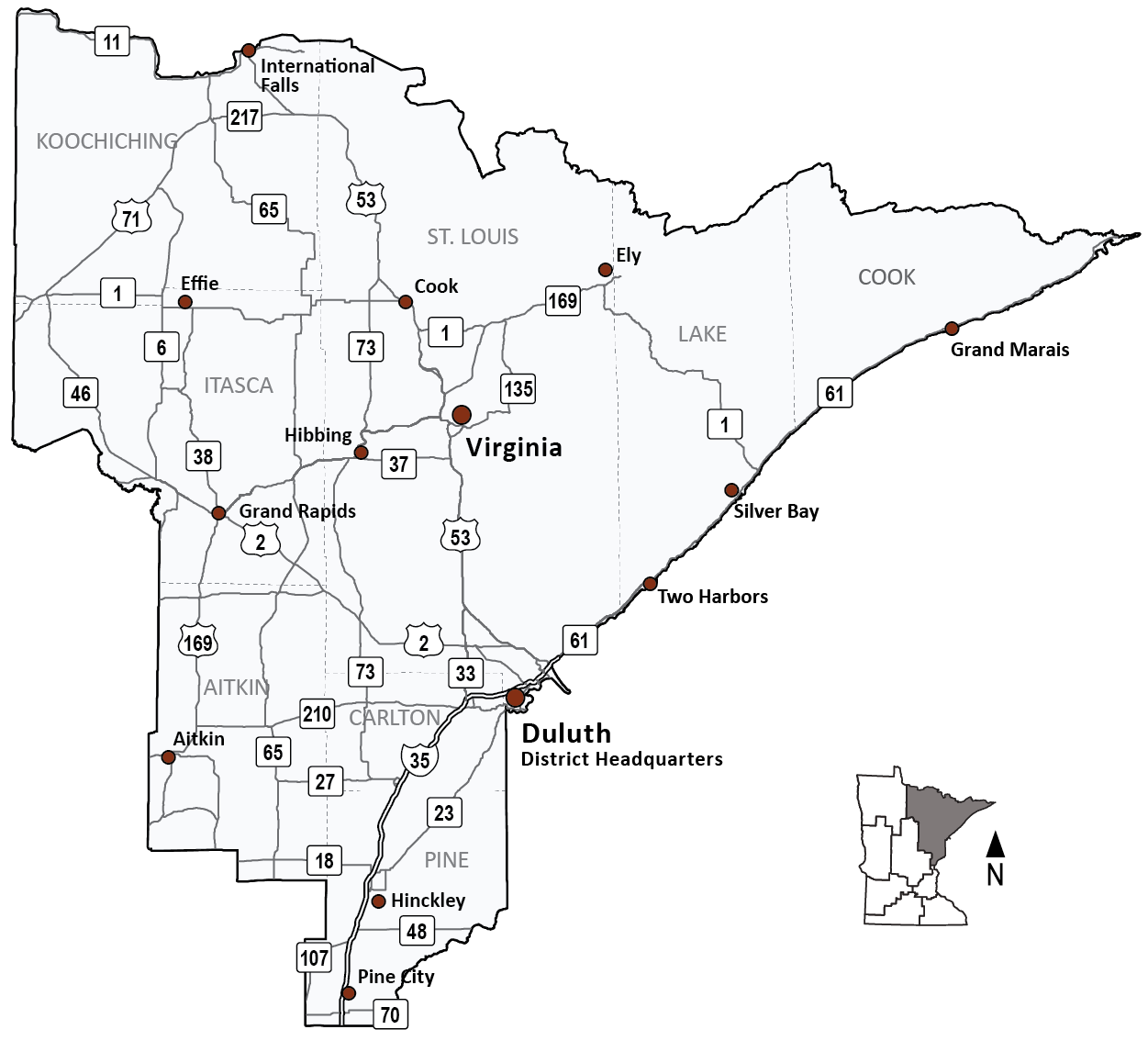The state’s transportation needs and priorities are determined through a comprehensive, performance and risk-based planning process.
Long-term goals
This process begins with our 50-year Minnesota GO Vision for Transportation. The vision and guiding principles are intended to inform the investment and service decisions of all agencies responsible for transportation planning, construction and delivery in Minnesota.
We update the 20-year Statewide Multimodal Transportation Plan every five years to articulate policy objectives and strategies necessary to support the vision over the next two decades.
Modal plans
Our family of plans is developed to further guide how we invest in highways, freight, rail, ports and waterways, aviation, transit, bikes, and pedestrians.
System Investment Plans offer mode-specific strategies and guidance, establish performance measures and performance-based needs, conduct risk-based assessments and investment tradeoffs, and identify system priorities.
Capital Highway Investment Plan
District 1’s 10-Year Capital Highway Investment Plan (CHIP) (PDF) 2025-2034 communicates the next 10-years of planned projects in the district. The planned projects align with the goals and objectives set in the Minnesota 20-Year State Highway Investment Plan (MnSHIP).
Over the next 10 years, District 1 is projected to invest roughly $2.1 billion in state highway projects. The majority of projects will address pavement and bridge condition. We will also address roadside infrastructure needs such as signage, culverts, lighting, as well as implement safety improvements and continue bicycle and pedestrian infrastructure investments. District 1 investment is high in the early years of the CHIP as funding is allocated for replacement of Blatnik Bridge.
Additional resources
Northeast Minnesota Area Transportation Partnership
We created area transportation partnerships (ATPs) more than three decades ago in response to changes in federal law that increased state flexibility and the need for public involvement in transportation planning and program decision-making. ATPs were established by each district specifically to facilitate broader input to the federal project selection process for the development of the State Transportation Improvement Program (STIP), the four-year program of state and local construction projects with federal highway and transit funding, as well as projects with state funding.
The Northeastern Minnesota Area Transportation Partnership (NEMNATP) includes representation Aitkin, Carlton, Cook, Itasca, Koochiching, Lake, Pine and St. Louis counties and the three tribal governments in MnDOT District 1. It is a committee of elected officials, engineers, planners and other agency representatives. Through the ATP, these organizations are responsible for reviewing the district’s proposed four construction program and recommend local transportation priorities for federal funding.
Tribal governments
District 1 has a close working relationship with the three tribes located in this area — Bois Forte, Grand Portage, and Fond du Lac. We consult with the tribes annually to discuss transportation issues and projects. A member from all three tribes also sits on the ATP.
Duluth-Superior Metropolitan Interstate Council
The Duluth/Superior Metropolitan Interstate Council (MIC) is the metropolitan planning organization (MPO) for the Duluth/Superior area. The MIC planning area encompasses Duluth and Superior, as well as the Minnesota cities of Hermantown and Proctor and the townships of Canosia, Duluth, Grand Lake, Lakewood, Midway, Rice Lake, and Solway, and the Wisconsin townships and villages of Lakeside, Parkland, Superior, and Oliver.
MPOs lead the development of metropolitan area transportation plans and as coordinate the transportation planning process. All urban areas with populations greater than 50,000 are required to have an MPO if the agencies spend federal funds on transportation improvements.
Arrowhead Regional Development Commission
The Arrowhead Regional Development Commission (ARDC) is a multi-disciplined planning and development organization serving the Northeast Minnesota counties in District 1. Regional development organizations/commissions (RDOs/RDCs) were established by Minnesota State Statute in 1969, and cover areas outside of an MPO’s area. Their purposes, as outlined in the Regional Development Act, are to assist in multijurisdictional issues, coordinate resources to meet jurisdictional needs, and coordinate planning activities within the specific regions.
ARDC works closely with us and provides staffing and planning assistance for several MnDOT initiatives, including the Regional Transportation Advisory Committee (RTAC). The RTAC is a forum for transportation and elected officials from the Arrowhead Region to discuss transportation issues and set regional priorities.
Toward Zero Deaths
Toward Zero Deaths (TZD) is a multi-agency partnership led by the Minnesota Departments of Transportation, Public Safety and Health, in cooperation with the FHWA, Minnesota county engineers, the UMN Center for Transportation Studies, and other traffic safety organizations. The Northeastern Minnesota TZD Partnership includes all counties in MnDOT District 1.
TZD provides an integrated approach to the application of education, engineering, enforcement and emergency medical and trauma services. The goal is to raise awareness around traffic safety issues and develop tools that can be used to reduce the number of deaths and injuries resulting from traffic crashes in Minnesota.

